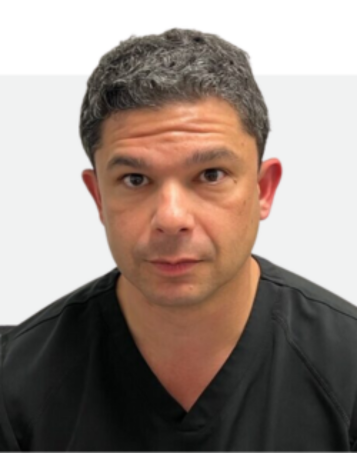Overcome Pain & Embarrassment With Your Legs Today!
Book a Consultation!
By filling out this form you authorize Atlanta Vein Doc to send you SMS messages.
Meet Our Experts – Highly Trained Specialists

Parrin Tareyl Barton, MD
Lead Vein Physician
Dr. P. Tareyl Barton is a distinguished vein physician with a remarkable background in healthcare. Originating from Peach County, Georgia, she is not only highly skilled and experienced but also known for her compassionate approach toward patient care.
Dr. Barton obtained her MD from Mercer University School of Medicine, followed by her PharmD from Mercer University Southern School of Pharmacy. She further pursued specialized training in Family Medicine and GYN/OB, complemented by a Fellowship in Maternal-Fetal Medicine at Cornell in New York City.

Jeremias Duarte, DO
Vein Physician
Dr. Jeremias R. Duarte, originally from Columbus, Georgia, has a diverse medical background that includes service in the U.S. Army as a combat medic and military physician, with deployments abroad. Dr. Duarte graduated magna cum laude from Columbus State University. He earned his medical degree from the Philadelphia College of Osteopathic Medicine in Suwanee, Georgia, and completed his internship at Hackensack Meridian Health, Palisades Medical Center in New Jersey.

Greg Lott, RVT, RDMS

Ovi Cioloca, RVS
Ovi Cioloca is a passionate and experienced registered vascular sonographer (RVS) with over 10 years of experience in the field. He is certified through Cardiovascular Credentialing International (CCI) and has performed thousands of venous ultrasound scans and vein procedures.
Outside of work, Ovi enjoys spending time with his family, traveling, participating in extracurricular activities, and maintaining a healthy lifestyle through hiking, walking, and sports. His energy and extensive knowledge make him a valuable addition to any medical practice.
FAQs
Most frequent questions and answers
Your leg has two sets of veins: deep veins, which are located deep within the leg muscles, and superficial veins, which are just below the skin’s surface.
Normally, blood circulates from the feet towards the heart in both sets of veins. However, when someone has venous insufficiency, the blood flows up the deep veins and then back down into the superficial vein. This causes the blood to pool in the superficial veins, leading to bulging and the development of varicose veins. These veins are often bluish or purple in color.
Spider veins are smaller versions of varicose veins. They are red, purple, or blue vessels that are also twisted and turning, and they are typically seen on the legs, chest, or face.
No, varicose veins may develop in deeper areas of the leg where they are not visible. Varicose veins are actually a type of venous insufficiency disease, which can cause various symptoms in addition to the visible veins.
Venous insufficiency disease can result in leg discomfort, ankle and leg swelling, itching, and fatigue. Other symptoms may include tingling, cramping, aching, and a feeling of heaviness in the lower limbs after standing for extended periods.
It’s important to be aware of these symptoms beyond just the appearance of visible veins.
In brief, the answer is no. While exercise and wearing compression stockings may provide some relief from the symptoms of varicose veins, typically only medical treatment can effectively eliminate a varicose vein.
If left untreated, varicose veins can progress and become dangerous, potentially leading to venous ulcerations. Complications can also arise, including rashes, infections, bleeding, sores, and blood clots.
In rare cases, varicose veins can cause deep vein thrombosis (DVT) and pulmonary embolism, both of which are life-threatening conditions.
Our process for diagnosing varicose veins typically involves three steps:
Consultation – We begin with a consultation where our friendly staff will listen to your concerns and ensure that you receive the best care possible. Our expertly trained team will provide you with care, including a provider and an ultrasonographer on the first visit.
Ultrasound – Following the consultation, we move on to the assessment, where we provide you with an accurate diagnosis. You will receive a same-day ultrasound and results on site while seeing the provider. This allows you to get back to your normal routine as quickly as possible.
Treatment Plan – Once we have completed our assessment, we will develop a treatment plan for you. We offer various options such as radiofrequency ablation (RFA), sclerotherapy, pneumatic compression, and more. We will work with you to develop a customized treatment plan that is tailored to your specific needs and outcome goals.
To learn more about our process, please visit our Our Process page or click here.
